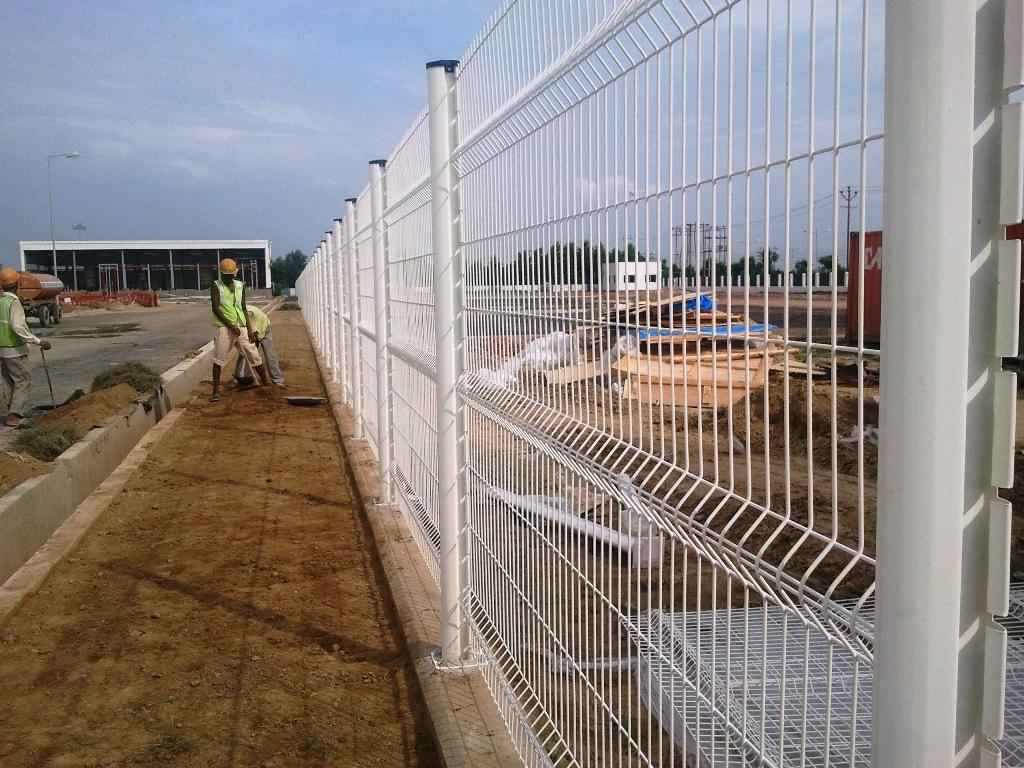Introduction
In India’s rapidly growing industrial landscape, ensuring the security of warehouses and factories is of utmost importance. These facilities often house valuable goods, equipment, and raw materials that make them attractive targets for theft, vandalism, and unauthorized access. Effective security fencing is a critical component of safeguarding these premises, providing a physical barrier to deter intruders and protect assets.
This blog delves into the essential tips and tricks for choosing the right security fencing for Indian warehouses and factories. By understanding the key considerations and exploring various fencing options, businesses can make informed decisions to enhance their facility’s security.
Why Security Fencing is Crucial for Warehouses and Factories?
Warehouses and factories are vulnerable to security threats due to their often isolated locations, large perimeters, and the high value of the goods stored or manufactured within them. Without proper security measures, these facilities can be easy targets for thieves, vandals, or unauthorized personnel. A well-designed security fence not only acts as a deterrent but also controls access, ensuring that only authorized individuals can enter the premises.
Security fencing becomes even more critical in India, where industrial facilities are scattered across urban, semi-urban, and rural areas. Whether the factory is located in an industrial park or a remote area, robust fencing serves as the first line of defense against potential threats.
Essential Tips for Choosing Security Fencing for Indian Warehouses and Factories
1. Assess the Security Needs of Your Facility
Before choosing a fence, it’s crucial to assess the specific security requirements of the warehouse or factory. Consider factors such as the location, the type of goods stored or manufactured, the level of foot traffic, and any past security incidents. By understanding the facility’s vulnerabilities, you can determine the height, material, and additional security features needed in the fencing solution.
2. Opt for Durable and Tamper Resistant Materials
Security fencing for warehouses and factories should be constructed from durable materials resistant to tampering, cutting, or corrosion. Some of the most popular materials for industrial security fencing are as follows:
ChainLink Fencing with Barbed wire:

Chainlink fences reinforced with barbed wire or razor wire provide both visibility and security. The barbed wire on top acts as an additional deterrent, preventing anyone from scaling the fence.
Concertina Coil Fencing:

It will prevent intruders from climbing walls if we provide razor blades on it. It is composed of sharp blades arranged in a spiral pattern, it can be used on its own or add it to existing fences and walls for extra security.
Welded Mesh Fencing:

Welded mesh fencing is strong and difficult to cut through, making it ideal for factories and warehouses. The grid structure allows for visibility, which is essential for monitoring and surveillance.
Anti-Climb Mesh:

Anti-climb mesh, also known as security mesh, serves as a robust barrier specifically designed to deter trespassing and unwanted access. Moreover, its tightly woven structure makes it difficult to scale, further enhancing the overall security of the perimeter. This metal mesh fencing is constructed from thick, galvanized steel wires welded into a rigid grid pattern with small openings.
3. Incorporate Height and Add Deterrents
The height of the security fence is a crucial factor. Taller fences are more difficult to climb and serve as a more effective deterrent to intruders. For warehouses and factories, fences should typically be at least 8 to 12 feet high, depending on the security needs. Additional deterrents like razor wire, electric fencing, or spikes can be installed at the top to prevent scaling.
4. Ensure Controlled Access Points
While the perimeter fence plays a vital role in security, the access points (gates) are just as critical. Controlled access points should be equipped with secure gates that can be monitored and managed. Additionally, gates should be designed with the same level of security as the fence by incorporating durable materials and tamper-resistant locking mechanisms. This ensures consistent protection across the entire perimeter.
5. Integrate Fencing with Security Systems
Modern security fencing solutions are more effective when integrated with other security systems such as:
- CCTV Surveillance:
- Installing cameras along the fence perimeter ensures that any suspicious activity is recorded and monitored.
- Motion Sensors and Alarms:
- Motion sensors installed along the fence line can trigger alarms in the event of unauthorized access attempts. This enables security personnel to respond swiftly and effectively.
- Lighting:
Adequate lighting along the perimeter can deter intruders and improve visibility for security teams.
6. Regular Maintenance and Inspection
Even the most robust security fence can become ineffective if not properly maintained. Regular inspections must be conducted to check for wear and tear, rust, or any damage to avoid security breaches. It’s essential to repair any weak points in the fence right away to prevent potential security risks. Furthermore, in areas with harsh environmental conditions, such as high humidity or salty air, it becomes even more important to invest in corrosion-resistant materials. By doing so, not only will you enhance the durability of the fence, but you will also significantly reduce the need for frequent maintenance, ultimately saving time and resources in the long run.
Conclusion
Security fencing is an essential investment for warehouses and factories across India, offering protection against theft, vandalism, and unauthorized access. By carefully assessing the security needs of the facility, choosing durable materials, and incorporating additional deterrents like electric fencing or barbed wire, businesses can ensure that their premises remain secure. Regular maintenance and inspection will ensure that the fence continues to serve its purpose effectively, providing peace of mind for facility managers and business owners alike.










 Adequate lighting along the perimeter can deter intruders and improve visibility for security teams.
Adequate lighting along the perimeter can deter intruders and improve visibility for security teams.















